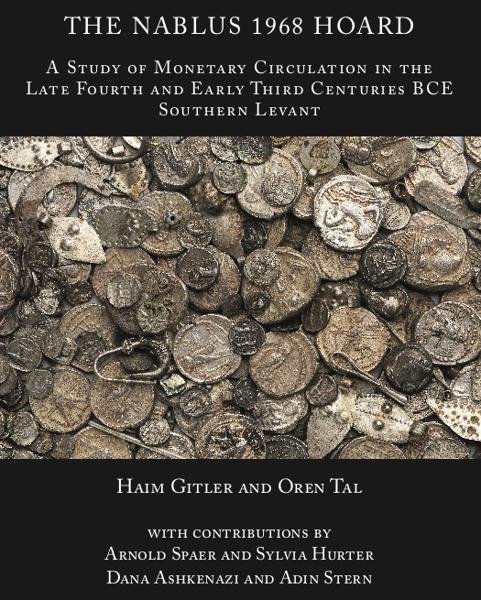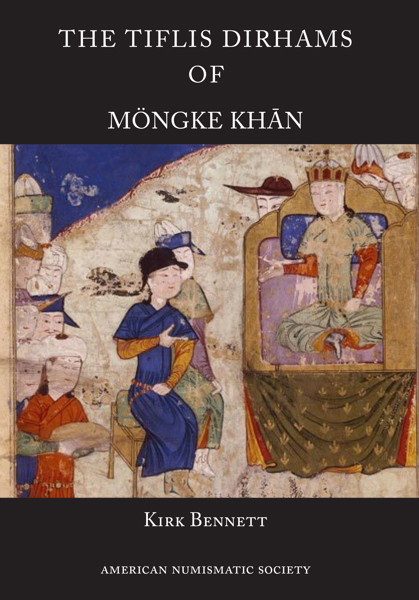
The Nablus 1968 Hoard: A Study of Monetary Circulation in the Late Fourth and Early Third Centuries BCE Southern Levant
Haim Gitler, Oren Tal
- Pages: 256 p.
- Size:152 x 229 mm
- Illustrations:32 b/w, 42 col., 18 tables b/w.
- Language(s):English
- Publication Year:2019
- € 77,00 EXCL. VAT RETAIL PRICE
- ISBN: 978-0-89722-360-7
- Hardback
- Available
"Cette étude (...) est un élément majeur désormais accessible aux chercheurs. La rigueur et la clarté du propos, tant en termes monétaires (catalogue, description des apports en introduction) qu’en termes techniques (choix des outils d’analyse, portée technique et historique des résultats) permettent une appréhension fine et efficace des données du trésor, sans pécher par excès d’interprétation." (Gaëlle Thevenin, dans Syria [Online], https://doi.org/10.4000/syria.11474)
Haim Gitler, born in Mexico City in 1962, received his Ph.D. in numismatics from Nicolaus Copernicus University, Torun in 2011. He has worked in the Israel Museum (since 1987), where he is currently the Tamar and Teddy Kollek Chief Curator of Archaeology (since 2013), as well as Curator of Numismatics (since 1994). Gitler taught numismatics at the Hebrew University, Jerusalem (1996–1998) and Tel Aviv University (2010–2014). He is the President of the Israel Numismatic Society and founder of the journal Israel Numismatic Research in 2006. His research interests focus mainly on Palestinian issues and mints of the Persian, Hellenistic and Roman periods, as well as on their metal composition and quantification.
Oren Tal, born in Tel Aviv in 1968, received his Ph.D. in archaeology from Tel Aviv University in 2002. He has worked in Tel Aviv University (since 2007) where he is currently full professor (since 2013) researching and teaching classical and medieval Near Eastern archaeology in the Department of Archaeology and Ancient Near Eastern Cultures. Tal is the current Director of the Apollonia-Arsuf Excavation Project (since 2007) and co-director of the Tell Iẓṭabba (Scythopolis) Excavation Project (since 2019). His research interests concern the material culture of the classical- and medieval-period Near East and its social, political, and economic implications, from the mid-first millennium BCE to the early second millennium CE.
The Nablus 1968 Hoard is the largest late Persian/early Hellenistic period coin and jewelry hoard recorded from the southern Levant and the largest known hoarded assemblage of Samarian coins. This study provides a detailed catalogue of all the coins and pieces of jewelry the authors managed to record. In addition, the authors discuss the hoard and its context, its burial date, a synopsis of the history and archaeology of the Persian period province of Samaria, a discussion on the hoard’s Phoenician, Samarian, Athenian-styled, Philistian, and Yehud coins, Athenian tetradrachms and the few overseas Greek and Cypriot issues belonging to the hoard. The commentary chapter is followed by detailed archaeometallurgical studies on selected Samarian and Athenian-style coins and selected pieces of jewelry. There are also two appendixes, one presenting a method for determining dies links and the second offering a glossary of relevant terms. The hoard’s composition reflects the monetary circulation of the late fourth and early third centuries BCE southern Levant.
1. Introduction
2. Catalogues
3. Archaeometallurgical Analysis of Fourth Century BCE Silver Coins from Samaria
4. An Archaeometallurgical Perspective: Analysis of Fourth Century BCE Silver Jewelry from the Nablus and Samaria Hoards
5. Appendix I: Implemented Method for Determining Die Links within the Nablus Hoard
6. Appendix II: Glossary
7. Bibliography




